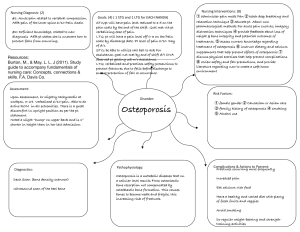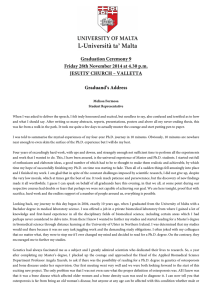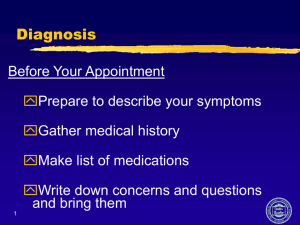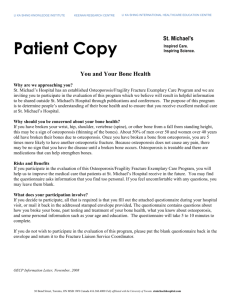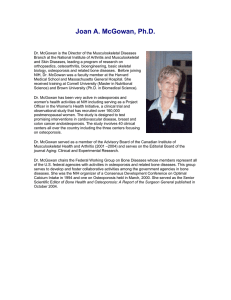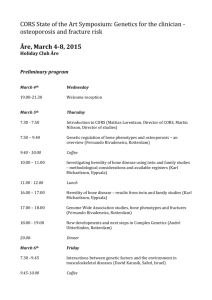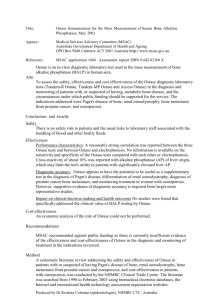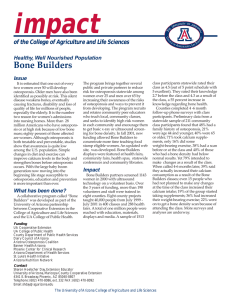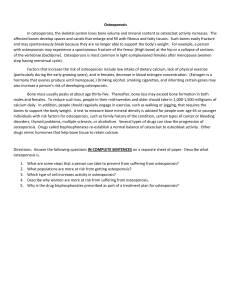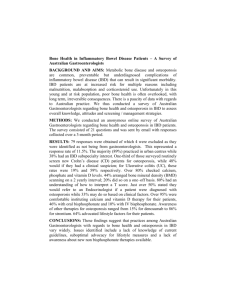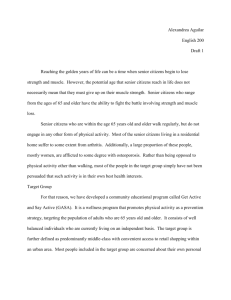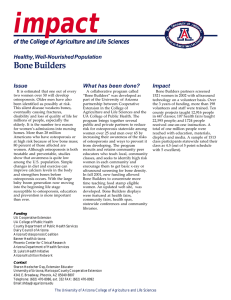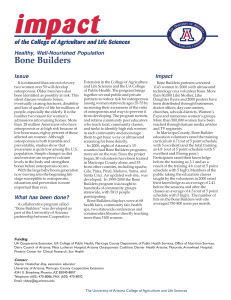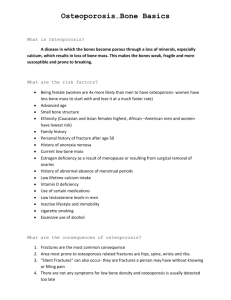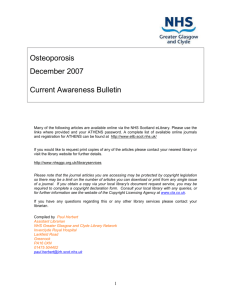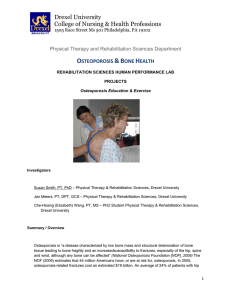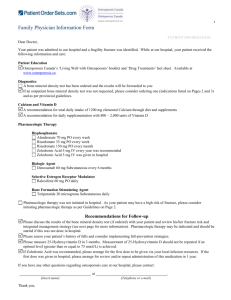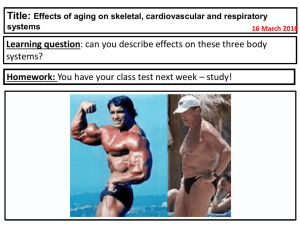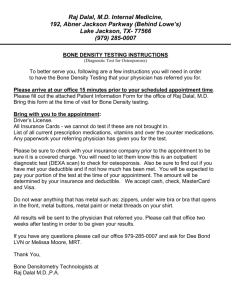5 key issues to consider with Seniors
advertisement
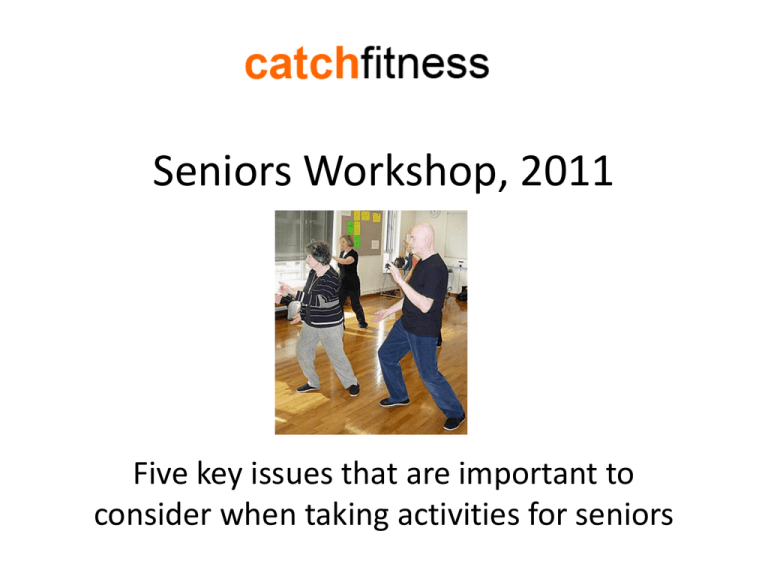
Seniors Workshop, 2011 Five key issues that are important to consider when taking activities for seniors Introduction 1. Supine lying 2. Joint replacements 3. β blockers 4. Osteoporosis 5. What’s the big deal about exercising…and the prevention of falls? Supine lying • Increased thoracic kyphosis with age • Difficult to lie supine without extended neck • May compromise blood flow to brain – which can cause…? • May also affect inner ear Supine lying • So, what’s the solution? Joint replacements • Should elderly exercise following joint replacements? • How soon after surgery? • What are their limitations? β blockers • How do you measure intensity of exercise in elderly? • What are β blockers? • So, what’s the answer… β blockers Osteoporosis • Often considered a ‘normal’ part of aging • Characterised by? • Risk factors? Osteoporosis • The following factors may all be expected to contribute to the rapid onset and progression of osteoporosis: – Low peak bone mass – Calcium or vitamin D deficiency – Sedentary lifestyle (lack of weight bearing exercise) – Advanced age Physical activity for bone health • Weight-bearing exercise is associated with stronger skeleton Osteoporosis prevention: • prevention is essential (there is treatment, but no cure) • however, osteoporosis is multifactorial and has a genetic component – so for some it may be inevitable Physical activity for bone health Weight-bearing exercise: • Walking, jogging, stair climbing, weight-training, tennis, bowling, football, dancing etc – depends on individual’s goals, overall health status, degree of bone loss, and enjoyment – ensure optimal posture and note precautions (see later slide) Physical activity for bone health Physical activity for bone health • Teach your client how to move well – good body mechanics and avoid the following: • Precautions: – – – – Forward bending Heavy lifting Twisting High-impact activities What’s the big deal about exercising…and the prevention of falls Because it works: • Increase strength – what muscles? • Increase balance – how? From: 2010 AGS/BGS Clinical Practice Guideline: Prevention of Falls in Older Persons - Summary of Recommendations The components most commonly included in efficacious interventions were: a) Adaptation or modification of home environment [A] b) Withdrawal or minimization of psychoactive medications [B] c) Withdrawal or minimization of other medications [C] d) Management of postural hypotension [C] e) Management of foot problems and footwear [C] f) Exercise, particularly balance, strength, and gait training [A] How active are older people? Functional decline and frailty (Spirduso, 1995) Time Human frailty Disease Disuse Increased mobility Increased leg strength Decreased falls Live longer Falls prevention The key is to maintain good strength and balance http://www.acc.co.nz/preventing-injuries/at-home/older-people/informationfor-programme-providers/index.htm#P14_727 • Go to the above link – at the bottom of the page you will see “Available OEP resources” - ACC1162 Otago Exercise Programme manual (PDF 2.9M) - ACC1161 Otago Exercise Programme activity booklet (PDF 713K)
